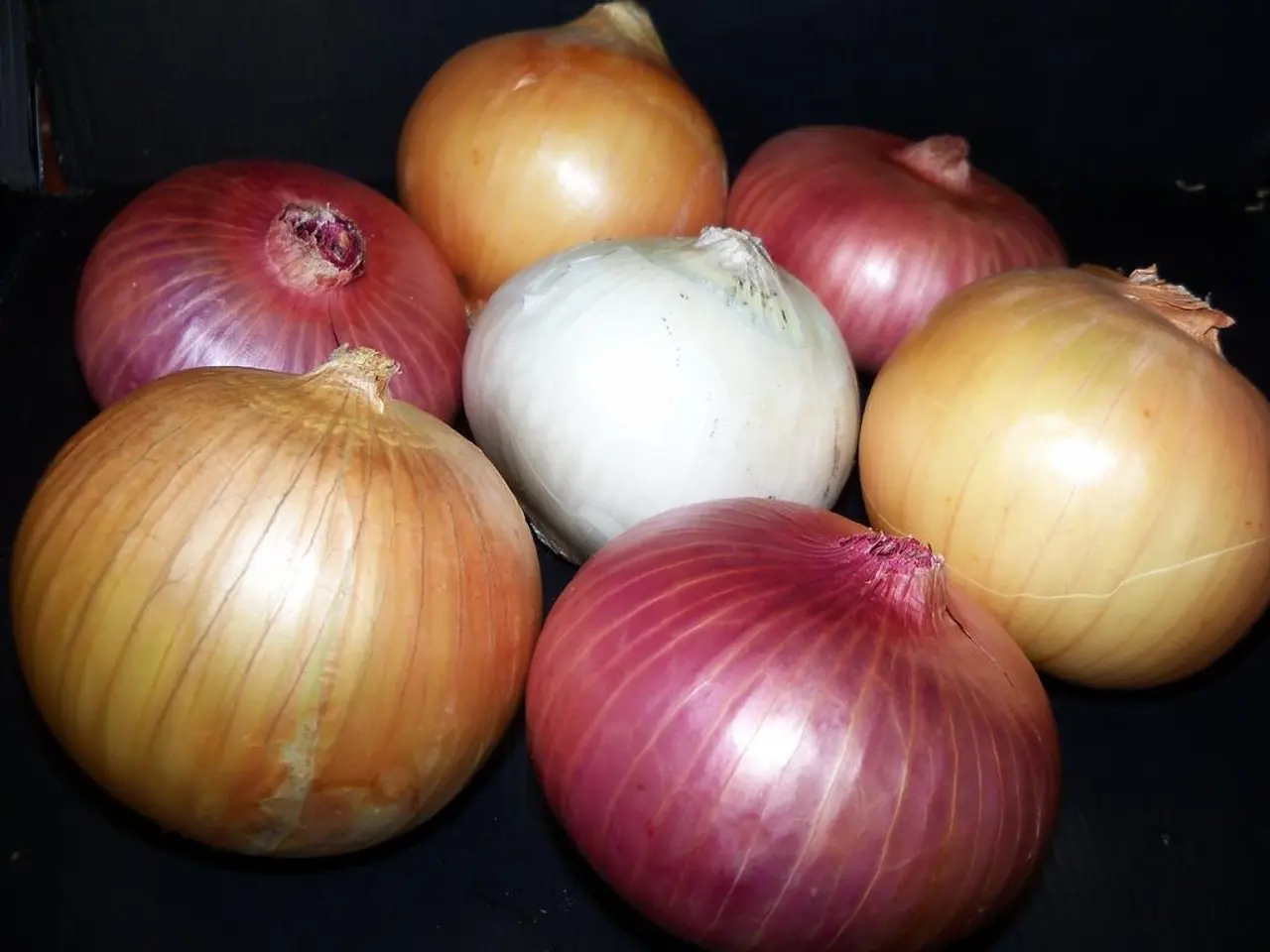Garlic Planting Time Is Upon Us: Discover Steps on How to Cultivate Garlic Now
In the world of home gardening, garlic stands out as a versatile and rewarding crop. With a rich history dating back centuries, this humble vegetable offers more than just a pungent flavour boost to your meals. From early cropping varieties to hardy cultivars, there's a garlic for every gardener, regardless of climate and experience level.
Garlic can be sown from September to February, and harvested from May to July, providing a bounty that can extend from spring to Christmas and beyond. However, it's not recommended to plant cloves from shop-bought garlic, as they may be cultivars better suited to warmer climates.
Garlic cultivars can be categorised into three main groups: hardneck, softneck, and elephant garlic. Hardneck garlic, suitable for colder climates (Zones 3–6), produces flowering scapes, has bold, complex flavours, and large cloves. Varieties like Siberian, German Extra Hardy, and Porcelain types are popular choices. Softneck garlic, on the other hand, thrives in milder, warmer climates, offering more cloves per bulb and a milder, sweeter flavour. Inchelium Red and California Early White are popular softneck varieties.
Elephant garlic, technically a leek, is a beginner-friendly option with very large cloves and a mild flavour. It's ideal for those wanting less pungency. Noteworthy hardneck cultivars include Morado Creole, with its purple-striped bulbs and complex earthy aroma, and Chesnok Red, known for its intense heat that mellows with cooking and long storage life.
For northern gardeners, hardneck varieties are favourites due to their complex flavour and cold tolerance. In warmer regions, softneck garlic is preferred for its longer storage and milder taste. Elephant garlic offers an easy-growing option with mild flavour and large cloves, suitable for those wanting less pungency.
Before planting garlic, soil should be dressed with rock potash and bone meal. Cloves should be placed 20cm apart, with the soil just covering the tip, and rows should be 20cm apart (or reduced to 10cm in smaller gardens). When harvesting, the stem should be trimmed down to about 6cm, the roots cut off, the dirty outer layers of skin rubbed away, and the bulbs plaited together for storage.
The Garlic Farm, located at Mersley Lane, Newchurch, Isle of Wight PO36 0NR, stocks many of the cultivars mentioned. If you're in a region without a garden, don't worry—it's possible to grow vegetables in pots.
Remember, the best garlic cultivars for home gardening vary primarily based on climate and region. For optimal results, consult regional hardiness zones and consider trial planting multiple varieties suited to your area. Happy gardening!
[1] https://www.rhs.org.uk/advice/profile?PID=531 [2] https://www.almanac.com/plant/garlic [3] https://www.gardeningknowhow.com/edible/bulbs/garlic/growing-garlic-in-the-garden.htm [4] https://www.bhg.com/gardening/vegetables/growing/garlic-growing-guide/
- For those who enjoy home gardening, garlic, with its versatile qualities, is a rewarding crop to cultivate, offering a bounty that extends from spring to late winter.
- Whether you prefer the bold and complex flavors of hardneck garlic or the milder taste of softneck garlic, there's a variety suitable for every climate and gardening experience.
- If you're interested in trying something different, consider growing elephant garlic, which is technically a leek, and offers large cloves and a mild flavor.
- For northern gardeners, hardneck varieties are often favored due to their complex flavors and cold tolerance, while softneck garlic is preferred in warmer regions for its longer storage life and milder taste.
- Regardless of whether you have a larger garden or are limited to growing vegetables in pots, consult regional hardiness zones and consider trial planting multiple garlic varieties to find the best fit for your area.




